We’ve scoured the internet and pulled in what we could find in terms of previews and reviews of the Canon EOS R5 Mark II. This is a live article that we will update as we find more information. If you find something cool – let us know so we can share it.
The R5 Mark II is an exciting and groundbreaking camera and as such, there’s a lot out there even during the first day after it’s announcement but before we get started, we should recommend you hit a preorder link below to reserve your very own EOS R5 Mark II, before you get sidetracked reading and watching all the information on this exciting release.
Canon EOS R5 Mark II Preorder
- Midwest Photo $4299
- B&H Photo $4299
- Adorama $4299
- Canon USA $4299
- Wex Photo £4499
- Foto Koch €4799
- Foto Erhardt €4799
Website Previews
CameraLabs – Canon EOS R5 Review so far
DPReview – Canon EOS R5 Mark II Initial Review
DigitalCameraWorld – Canon EOS R5 Mark II review: still the best damn camera you can buy
Video Previews
|
When you purchase through links on our site, we may earn an affiliate commission. Here's how it works. |



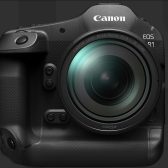
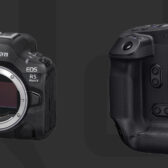
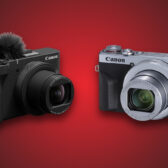
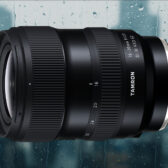
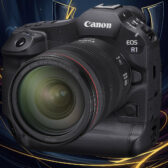
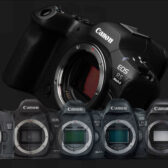
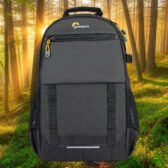
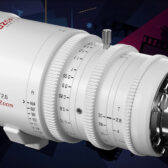

Another link for the R5MkII--Technical Specifications pdf
1. Good find by you.
2. If truly an error, that's a rather significant 'booboo' (not just a stray sentence or phrase).
Canon Europe:
Both Canon Japan and Europe also list the sensitivity for the R5II as -6.5 EV, whereas Canon USA lists -7.5 EV. It looks like someone at Canon USA entered the R1 specs into the R5II list.
...the plot thickens ;)
Canon EOS R5 Mark II Preview: STACKED & IMPRESSIVE…the TRUE “Flagship”?!
(from the top, the fourth of six videos posted here) confirms the lack of cross-type AF in the R5MkII.
Comparisons of the images I posted above reveal a likely copy-and-paste error--every word (R5MkII & R1) is identical.
These specs contain an interesting thing about the sensor (emphasis mine): “Canon designed full-frame back-illuminated stacked CMOS sensor”. It does not state “Canon designed and manufactured”. Does that mean that the sensor is not manufactured by Canon?
I guess I will focus on my smartphone more (pun intended). That also has the 16 stops of DR that were rumored earlier. ;)
Canon EOS R5 Mark II review: still the best damn camera you can buy
=====
But part of what I find fascinating in the writings of James Artaius (the author of the above-linked article) is within his 'mini-review':
OH. MY. GOD. Canon's in-camera AI is going to change everything
Specifically, the author writes this:
"Fiddliness aside, I believe these AI features are going to completely transform the way we look at cameras, sensors and performance. In one sense, the EOS R5 Mark II is essentially a 180MP camera with super-clean ISO performance. Why bother making expensive sensors with crazy resolution when you can just upscale at this quality?
But I look at this another way. Why even bother making a 24MP camera when you can make a 6MP sensor and upscale the files? That way you'll get the benefits of huge photosites for supreme low light performance, without any of the overheating woes that plague modern sensors.
And what does this mean for Canon's PowerShot products with 1-inch sensors – how much better could the image quality be coming out of pocket-sized cameras using this tech? [My emphasis added.]
Whatever happens, Canon's in-camera AI is going to change everything."
=====
I have long wondered how much modern technology Canon could pack into an S-series sized truly pocketable camera, a camera that could do more than a modern iPhone (or whatever phone) can do.
In fact I've posted this sort of thing previously, right here on CR.
I would pay a premium price for such a product.
Sometimes writers just...lose it. That's one..dumb take.
Regardless, there could be various uses for that up-scaled image, however, its still a jpeg. I wonder if it will be a 300dpi jpeg, or a 72dpi image that must be altered for print. Large scale printers also do some mumbo jumbo to files to print at those huge sizes, so there's that as well.
I dont care much, just a techie question. Questions need answers, hah.
In-camera upscale is faster (even if 10 seconds) vs editing in post but quality needs to be great SooC
the AI upscaling looks far better than I thought it would.
Your efforts on CR are much appreciated.
Thank you!
Yesterday was the craziest of days. Craig and I were both at it for about 12 solid hours yesterday.
in a studio environment as an example - there wouldn't be much pushing required in post.
I could see them adding this into HEIF once they get the kinks out - now then that would be something.,
From the tail end of the link:
The editor of Digital Camera World, James has 21 years experience as a journalist and started working in the photographic industry in 2014 (as an assistant to Damian McGillicuddy, who succeeded David Bailey as Principal Photographer for Olympus). In this time he shot for clients like Aston Martin Racing, Elinchrom and L'Oréal, in addition to shooting campaigns and product testing for Olympus, and providing training for professionals.
But your point here is a good one; most writers engage in occasional hyperbole. In a review like his...on Day 1...I don't mind a bit of hyperbole. YMMV.
"There's also the fact that, right now, upscaling only works on JPEGs or HEIFs rather than RAW files"
HEIF's then give you far more lattitude. so that would be actually not half bad.